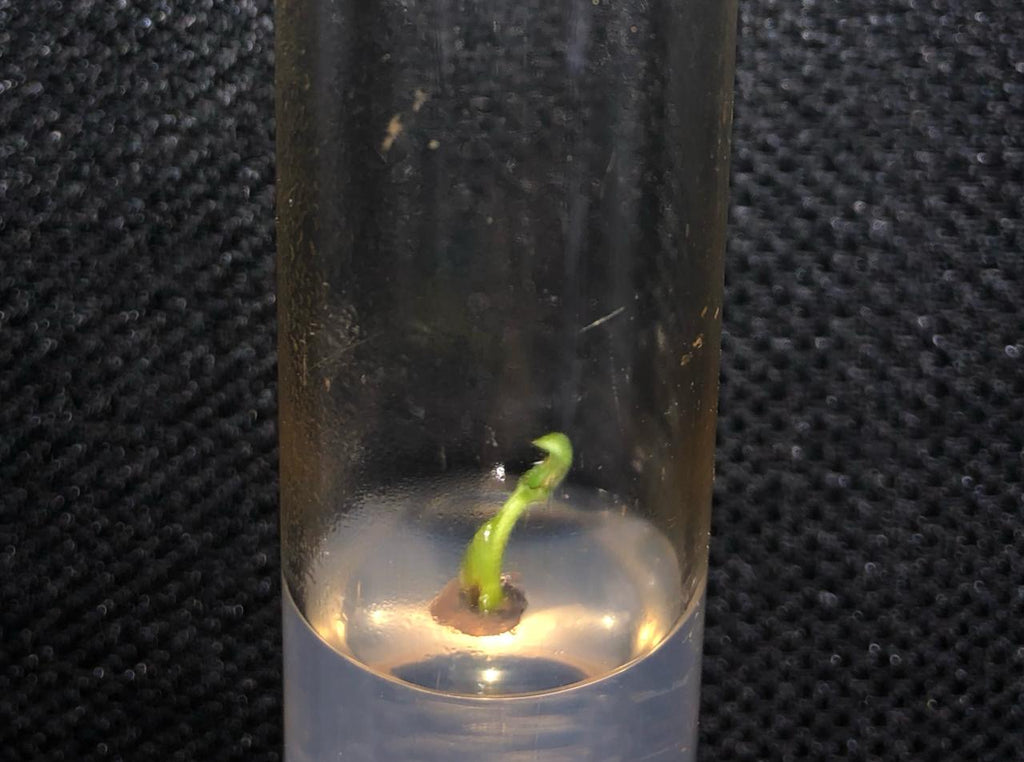Above is a baby Kali Kava™ Kali Kea plantlet that has been regenerated from a nodal meristem. It is growing in a sterile nutrient rich agar and took 4 months to go from a pinhead sized meristem, to this impressive 3mm tall Jack and the Beanstalk monster! In all seriousness, this took A LOT of work to accomplish - Creating clean cultures that were free of Kava's 3,000 years of inherited pathogens, and creating the right protocols to regenerate these plants.
Kali Kava employed micropropagation to accelerate the natural selection process for plants that were expressing desirable traits - In our case, heat and cold and desiccation tolerance. Thankfully, along with these favorable traits came other favorable traits such as potency and pest resistance. In many instances of mutation, 99.9% of mutations are counterproductive to what a breeder is hoping for. Hence, it has taken a very long time and tens of thousands of plants, endless combinations of protocols, environmental experiments, and sheer luck to create plants the express the right genes while maintaining all other characteristics. That was our part.
The other 95% of this result was the plants willingness to adapt to conditions that it had likely not seen since the last ice-age. Somewhere dormant within the kava plant, were the genes necessary to adapt to temperature extremes, different soils and light cycles etc.. It was just a matter of coaxing these genes back into expressing themselves. Getting these expressions to stick over time is another challenge altogether which we'll go over in another post in the near future. For now, we wanted to share with you this small Plantlet, the first of its kind, the revolution starter - Kali Kea™


Leave a comment: